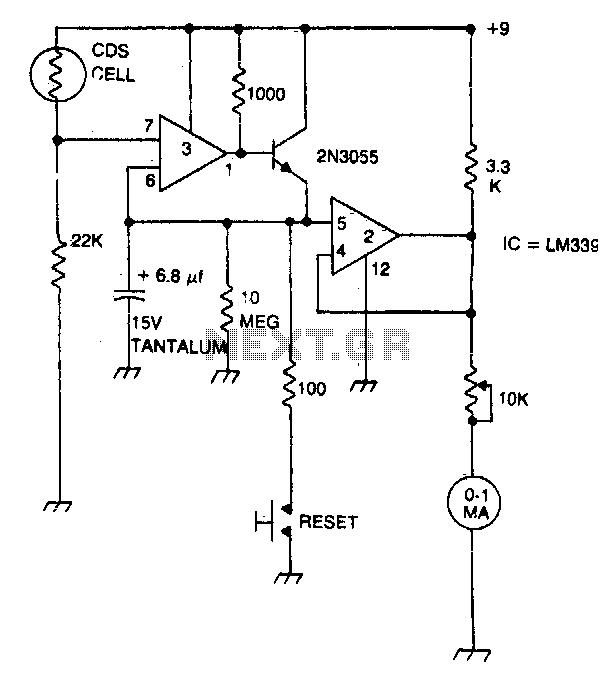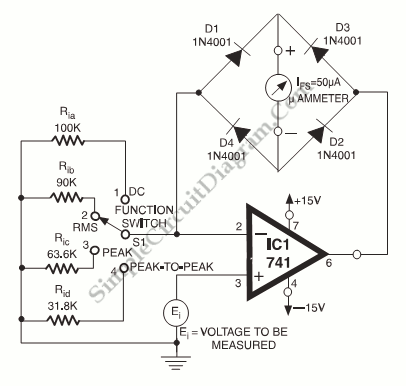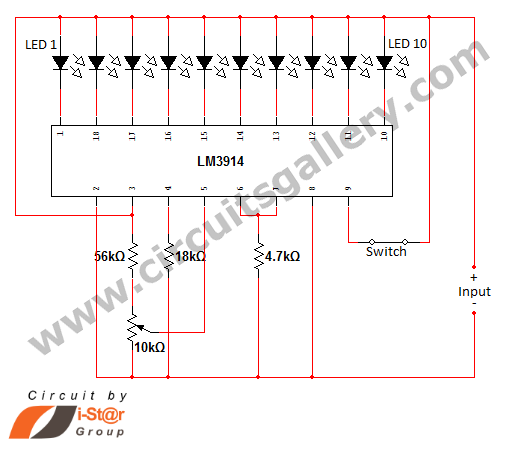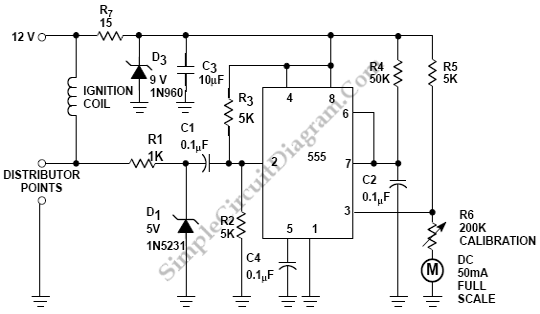
VOICE LEVEL METER
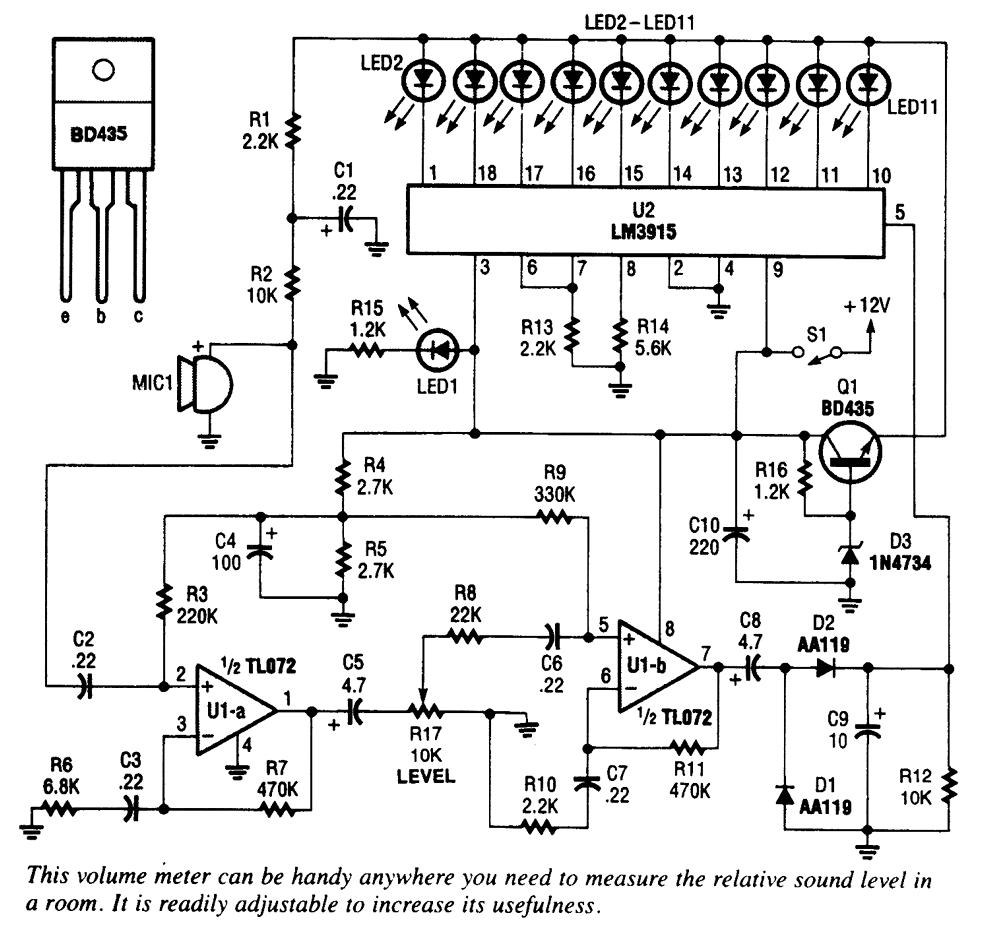
The LM3915 is a VU meter LED bar graph driver that can control 10 LEDs. It operates in conjunction with a simple audio amplifier that drives a detector circuit, providing the necessary DC drive for the LM3915.
The LM3915 IC is designed for visual representation of analog signals through an LED bar graph or dot display. It is particularly useful in audio applications to create a visual indication of signal levels. The device can drive up to 10 LEDs in a linear or logarithmic scale, depending on the configuration.
To implement this circuit, the audio signal is first amplified using a basic audio amplifier circuit. This amplifier boosts the audio signal to a suitable level for processing. The output from the audio amplifier is then fed into a detector circuit, which typically consists of a rectifier and a smoothing capacitor. This circuit converts the AC audio signal into a DC voltage that corresponds to the amplitude of the audio signal.
The DC voltage output from the detector circuit is connected to the input of the LM3915. The LM3915 interprets this voltage and drives the appropriate number of LEDs based on the input level. In a typical configuration, the IC can be set to operate in either bar graph mode, where all LEDs light up progressively, or dot mode, where only the highest LED lights up.
Additional components may include resistors for setting the reference voltage and capacitors for filtering noise in the power supply. Proper power supply decoupling is essential to ensure stable operation of the LM3915, minimizing fluctuations that could affect the LED output.
Overall, this circuit provides an effective and visually engaging way to monitor audio signal levels, making it suitable for applications in audio equipment, mixers, and other sound engineering tools.Using an LM3915 VU meter LED bar graph driver?10 LEDs are driven?A simple audio amplifierdrives a detector circuit?which provides dc drive for the LM3915.. 🔗 External reference
The LM3915 IC is designed for visual representation of analog signals through an LED bar graph or dot display. It is particularly useful in audio applications to create a visual indication of signal levels. The device can drive up to 10 LEDs in a linear or logarithmic scale, depending on the configuration.
To implement this circuit, the audio signal is first amplified using a basic audio amplifier circuit. This amplifier boosts the audio signal to a suitable level for processing. The output from the audio amplifier is then fed into a detector circuit, which typically consists of a rectifier and a smoothing capacitor. This circuit converts the AC audio signal into a DC voltage that corresponds to the amplitude of the audio signal.
The DC voltage output from the detector circuit is connected to the input of the LM3915. The LM3915 interprets this voltage and drives the appropriate number of LEDs based on the input level. In a typical configuration, the IC can be set to operate in either bar graph mode, where all LEDs light up progressively, or dot mode, where only the highest LED lights up.
Additional components may include resistors for setting the reference voltage and capacitors for filtering noise in the power supply. Proper power supply decoupling is essential to ensure stable operation of the LM3915, minimizing fluctuations that could affect the LED output.
Overall, this circuit provides an effective and visually engaging way to monitor audio signal levels, making it suitable for applications in audio equipment, mixers, and other sound engineering tools.Using an LM3915 VU meter LED bar graph driver?10 LEDs are driven?A simple audio amplifierdrives a detector circuit?which provides dc drive for the LM3915.. 🔗 External reference
